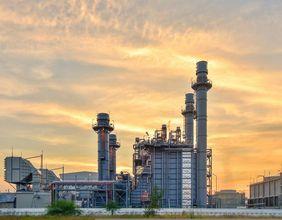OPEC+’s decision to aggressively increase oil supply will result in an earlier and sustained market surplus throughout 2025.
“Previously, we assumed a balanced market in the second quarter and a small deficit in the third quarter, before moving into a large surplus by the final quarter of the year,” Warren Patterson, head of commodities strategy at ING Group, said in a report.
The ICE Brent forward curve illustrates this dynamic, as a larger portion of the 2025 contracts are now trading in contango.
“However, the key assumption is that OPEC+ continues to increase supply through the third quarter of the year by similar amounts as in May and June,” Patterson said.
The recent rise in oil supply has negatively impacted prices, causing Brent crude to fall below $60 per barrel briefly.
“This is despite the market already expecting a large supply increase,” Patterson said.
The primary ambiguity concerned the magnitude of the anticipated rise. More substantial increases in supply establish a lower boundary for the market.
Supply increase impact price forecasts
In April, eight members of the Organization of the Petroleum Exporting Countries and allies reversed some of the 2.2 million barrels per day of voluntary production cuts and increased output by 135,000 bpd.

The 2.2 million bpd of voluntary production cuts borne by these eight members, including kingpin Saudi Arabia and Russia, were scheduled to be unwind over 18 months till September 2026.
However, much to the surprise of the market, OPEC announced an increase of 411,000 bpd in crude production in May, and a similar level will also be maintained in June as well.
This means the cartel already unwind 1 million bpd of the 2.2 million bpd of voluntary cuts in just three months.
As a result, ING has adjusted their ICE Brent forecast downwards for the rest of 2025 (second through fourth quarters), from $68 per barrel to $62 per barrel.
This revision reflects recent developments, Patterson noted.
“This leaves the 2025 average forecast at US$65/bbl, down from US$70/bbl previously.”
Patterson said:
This will change if OPEC+ reverses policy once again or if lower oil prices embolden President Trump to take a more aggressive approach toward several sanctioned oil-producing countries.
US oil industry set to slow down
A decline in oil prices is expected to cause a reduction in drilling operations within the US, according to ING.

The Dallas Federal Reserve Energy Survey indicates that, on average, oil producers require a price of $65 per barrel to profitably drill new wells.
Given that West Texas Intermediate (WTI) is trading near the mid-$50s, there is minimal motivation for drilling.
Patterson said:
Producer hedging may protect some oil producers initially. But US crude oil supply growth in 2025 and 2026 is looking less likely.
The number of active US oil rigs has decreased to 479, a decline from the April high of 489. This downward trend is mirrored in fewer well completions, as indicated by a reduced frac spread count.
Even if drilling activity remains strong, increased production is not a certainty.
Due to the present low prices, producers might postpone finishing these wells. This postponement would lead to a rise in the number of drilled, but uncompleted wells (DUCs) in inventory.
The post ING revises oil price forecast downward due to higher OPEC output appeared first on Invezz





